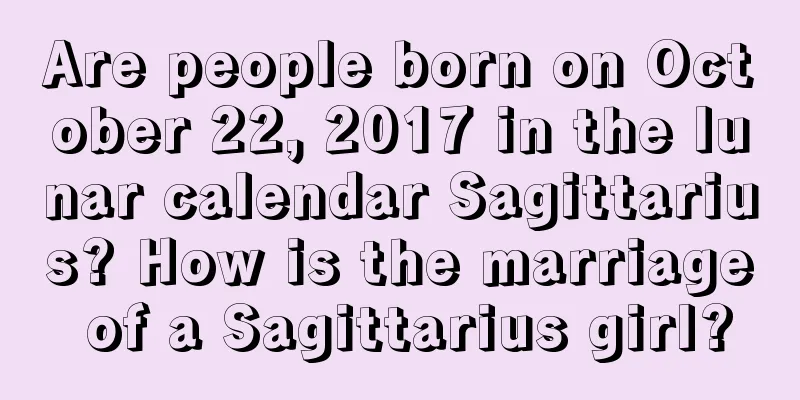What is the Dragon Boat Festival? Are there any customs for the Dragon Boat Festival?

Introduction: China is a traditional country with a profound traditional cultural heritage and rich cultural festivals and customs. The Dragon Boat Festival is also an important representative of our traditional cultural festivals. So what is the Dragon Boat Festival? Are there any customs for the Dragon Boat Festival? Let’s follow the editor to find out. The Dragon Boat Festival is a traditional cultural festival popular in China and other countries in the Chinese cultural circle. As the Dragon Boat Festival falls on the fifth day of the fifth lunar month every year, Mr. Shui Mo gave a detailed overview of the cultural content of the Dragon Boat Festival.When is the Dragon Boat Festival?The Dragon Boat Festival falls on the fifth day of the fifth month of the lunar calendar every year. According to the "Jingchu Sui Shi Ji", because people climb high places in midsummer when the sun is in the sky, and May is midsummer, its first noon is the day for climbing high places in the sky, so the fifth day of May is also called the "Dragon Boat Festival." In addition, the Dragon Boat Festival is also called "Midday Festival, May Festival, Dragon Boat Festival, Bathing Orchid Festival, Poets Festival", etc. The Dragon Boat Festival is a traditional cultural festival popular in China and other countries in the Chinese cultural circle.The Dragon Boat Festival originated in China. It was originally a totem sacrifice festival held by tribes who worshipped the dragon totem in the ancient Baiyue region (the middle and lower reaches of the Yangtze River and the area to the south). Before the Spring and Autumn Period in the Baiyue region, there was a custom of holding tribal totem sacrifices in the form of dragon boat races on the fifth day of the fifth lunar month. Later, because the poet Qu Yuan from the Chu State (now Hubei) during the Warring States Period committed suicide by jumping into the Miluo River with a stone in his arms on that day, the rulers used the Dragon Boat Festival as a festival to commemorate Qu Yuan in order to establish a label of loyalty to the emperor and patriotism; some areas also use the term "Dragon Boat Festival" to commemorate Wu Zixu and Cao E. The Dragon Boat Festival is known as one of the four major traditional festivals of the Chinese folk, along with the Spring Festival, Tomb-Sweeping Day and Mid-Autumn Festival. Since ancient times, the Dragon Boat Festival has included festival activities such as dragon boat racing and eating rice dumplings. Since 2008, the Dragon Boat Festival has been listed as a national statutory holiday. In May 2006, the State Council included it in the first batch of national intangible cultural heritage list; in September 2009, UNESCO formally reviewed and approved the inclusion of China's Dragon Boat Festival in the World Intangible Cultural Heritage, making it the first Chinese festival to be selected as a world intangible cultural heritage. What are the customs of the Dragon Boat Festival?Dragon Boat RacingDragon boat racing is the main custom of the Dragon Boat Festival. According to legend, it originated from the ancient Chu people who were reluctant to see the virtuous minister Qu Yuan commit suicide by jumping into the river, so many people rowed boats to chase him and save him. They rushed after him, but when they reached Dongting Lake, he disappeared. Since then, dragon boat races have been held every year on May 5th to commemorate this event. Dragon boat racing is used to drive away the fish in the river to prevent them from eating Qu Yuan's body. The custom of racing boats was popular in Wu, Yue and Chu.Eating Zongzi during Dragon Boat FestivalEating rice dumplings during the Dragon Boat Festival is another traditional custom of the Chinese people. Zongzi is also called "jiaoshu" and "tongzong". It has a long history and comes in many forms. On the morning of the Dragon Boat Festival, every family eats rice dumplings to commemorate Qu Yuan. Generally, the rice dumplings are wrapped the day before, cooked at night, and eaten in the morning. The main material used to wrap zongzi is reed leaves, which are the tender grass that grows abundantly by rivers and ponds. In some areas, bamboo leaves are also used. They are collectively called zong leaves. The traditional form of zongzi is triangular and is generally named according to the filling inside. The one filled with glutinous rice is called rice zongzi, the one with red beans mixed in the rice is called red bean zongzi, and the one with red dates mixed in is called date zongzi. They are collectively called glutinous rice zongzi. The homonym of "jujube rice dumpling" is "zaozhong", so the most popular food is jujube rice dumpling, with the belief that children who study hard can get the top score in the imperial examination soon after eating it. In the past, scholars would eat jujube-filled rice dumplings in the morning on the day of the imperial examination. Even today, some parents still make jujube-filled rice dumplings for candidates to eat on the morning of middle school and university entrance examinations.Wearing scent sachetChildren wear sachets during the Dragon Boat Festival. Legend has it that they are meant to ward off evil spirits and plague, but in reality they are just used as decoration on lapels. The sachet contains cinnabar, realgar and fragrant medicine and is wrapped in silk cloth. It is fragrant and then tied into a rope with five-colored silk threads. It is made into various shapes and tied into a string. They are colorful, small and cute. They have now become a common handicraft. In some southern cities in China, young men and women use sachets to express their deep love.Hanging mugwortA folk proverb says: "Plant willows on Qingming Festival and plant mugwort on Dragon Boat Festival." During the Dragon Boat Festival, people consider planting mugwort and calamus as one of the important activities. Every household has to sweep the courtyard, insert calamus and moxa sticks on the door lintel and hang them in the hall. They also use calamus, mugwort, pomegranate flowers, garlic, and ivy to make human or tiger shapes, which are called mugwort men and mugwort tigers. They are made into wreaths and pendants, which are beautiful and fragrant. Women compete to wear them to drive away miasma. The Dragon Boat Festival is also a "hygiene festival" that has been passed down since ancient times. On this day, people sweep the courtyard, hang mugwort branches, hang calamus, sprinkle realgar water, and drink realgar wine to stimulate turbidity and remove decay, kill bacteria and prevent diseases. These activities also reflect the fine traditions of the Chinese nation. Going up the mountain to collect herbs during the Dragon Boat Festival is a common custom among all ethnic groups in my country.Hanging the Image of Zhong KuiZhong Kui catching ghosts is a custom of the Dragon Boat Festival. In the Jianghuai region, every household hangs an image of Zhong Kui to ward off evil spirits. During the Kaiyuan period of the Tang Dynasty, Emperor Minghuang returned to the palace after giving a military lecture at Mount Li. He suffered from a severe malaria attack and dreamed of two ghosts, one big and one small. The small ghost wore bright red crotchless pants and they stole the sachet of Yang Guifei and the emperor's jade flute and ran around the palace. The big ghost, wearing a blue robe and a hat, caught the little ghost, dug out its eyes, and swallowed it in one gulp. The emperor asked the ghost, and the ghost replied: My surname is Zhong Kui, and I failed the martial arts examination. But I am willing to eliminate demons for your majesty. After the emperor woke up, his malaria was cured. So he ordered the painter Wu Daozi to paint a picture of Zhong Kui catching ghosts according to what he saw in the dream, and ordered the whole country to post it during the Dragon Boat Festival to drive away evil spirits.Hanging purses and tying five-colored silk threadsYing Shao's "Customs and Customs" records: "On May 5th, people tie colorful silk on their arms, which is called the long life thread, also known as the life-extending thread, the war-avoiding thread, the five-color thread, and the red rope. It can ward off soldiers and ghosts and prevent people from getting plague."In ancient China, people revered the five colors and regarded them as auspicious colors. Therefore, on the morning of the festival, the first thing adults do after getting up is to tie five-colored threads on their children’s wrists, ankles, and necks. Children are forbidden to speak when the string is being tied. The five-colored thread cannot be broken or discarded at will and can only be thrown into the river during the first heavy rain in summer or the first bath. It is said that children wearing five-colored threads can avoid being harmed by poisonous snakes, scorpions and other insects; throwing them into the river means letting the river water wash away the plague and disease, so that the children can stay healthy. Volume 8 of Meng Yuanlao's "Dongjing Menghualu" records: Dragon Boat Festival items include hundred ropes, mugwort flowers, silver drums, colorfully painted fans, sweet candies, small rice dumplings, and white balls. Perilla, calamus, and papaya are all minced, mixed with aromatic herbs, and packed in a plum-red box. From May 1st to the day before Dragon Boat Festival, peaches, willows, sunflowers, cattail leaves, and Buddhist and Taoist mugwort are sold. The next day, every household laid out a banner in front of their door, and offered five-colored water balls, tea and wine as offerings. They also nailed mugwort figures on their doors, and the nobles and common people feasted and rewarded each other. Chen Yuanliang's Sui Shi Guang Ji quoted Sui Shi Za Ji and mentioned a kind of "During the Dragon Boat Festival, make a bag with red and white colors, thread it with colored threads, and twitch it into the shape of a flower. It can be worn or nailed on the door to ward off evil spirits with red mouth and white tongue. It is also called twitching money." And another kind of "clam powder bell": "On the Dragon Boat Festival, put clam powder in silk and decorate it with cotton, like a rosary. Let children wear it to absorb sweat." The contents of these portable bags have changed several times, from sweat-absorbing clam powder, talismans to drive away evil spirits, copper coins, and realgar powder to repel insects, to sachets filled with spices. The production has become more and more refined, becoming a unique folk art for the Dragon Boat Festival. A similar custom is drinking realgar wine: this custom is very popular among families in the Yangtze River basin. Walking away diseases: This custom is popular during the Dragon Boat Festival in Guizhou. Order realgar wineRealgar is also a medicinal herb, which is said to be able to kill all kinds of poisons. Therefore, during the Dragon Boat Festival, people in Shaanxi will soak realgar in wine, and apply realgar wine on children's ears, noses, foreheads, wrists, ankles, etc. It is said that this practice can keep mosquitoes, snakes, scorpions, centipedes, geckos, spiders, etc. away.Summary: Through the above article, we know about the origin of the Dragon Boat Festival and its customs, which gives us a deeper understanding of the traditional festival Dragon Boat Festival. I wish you all a happy Dragon Boat Festival! |
<<: When is the Dragon Boat Festival in 2017? How to arrange the Dragon Boat Festival holiday?
>>: Where did the Dragon Boat Festival originate? What is the origin of the Dragon Boat Festival?
Recommend
Is April 30th of the lunar calendar in 2018 a suitable day to go to the temple to burn incense and pray?
Introduction: Burning incense and praying for bles...
What are the do’s and don’ts on the fifth day of the sixth lunar month in 2020?
The sixth month in the lunar calendar is the firs...
What is the good day for the second day of the twelfth lunar month in 2020? What day is it?
When the twelfth lunar month comes, the winterswe...
How about the 22nd day of the eighth lunar month in 2018? Is it a good time to decorate the wedding room?
Introduction: According to Chinese tradition, it i...
Is the sixth day of March 2020 suitable for moving house? Is it an auspicious day for moving?
The choice of an auspicious day for moving requir...
Is March 14th of the lunar calendar in 2019 a suitable day to have children? When is the due date?
Is March 14th of the lunar calendar in 2019 a suit...
Can I travel far away on August 13th of the lunar calendar in 2021? How is your fortune when going out?
Although the epidemic seems to be over, we still n...
What are the lucky gods for those born at the hour of Chou during the Frost Descent solar term on October 24, 2019?
What are the lucky gods for those born at the hour...
Is June 16, 2019, Father’s Day, a suitable day to start decorating the newlyweds’ wedding room?
Introduction: It is also necessary to choose an au...
How about moving into your new home during the Grain Rain season in 2018? How good or bad is the day?
Grain Rain is the last solar term in spring, which...
Where is the God of Wealth on May 23, 2017? How to calculate the God of Wealth's position
The fifth month of the lunar calendar is the firs...
What is the fate of a boy born on the first day of the fourth lunar month in 2021? Is his life good?
People born in April are generally popular and lik...
The reasons why Beijing is a Feng Shui treasure land
Introduction: Beijing is the capital of my countr...
Is the summer solstice the perihelion or the aphelion? Is the 2020 summer solstice a bad day?
Introduction: The summer solstice is an important ...
Is the sixth day of the tenth lunar month in 2020 a good day to pray?
Is the sixth day of the tenth lunar month in 2020 ...









